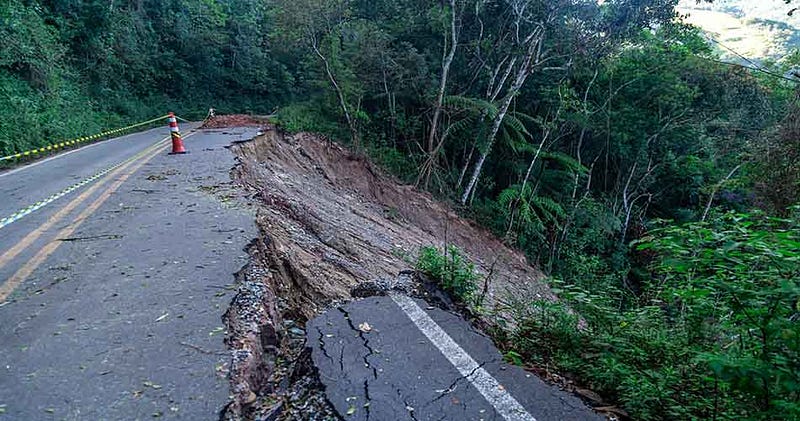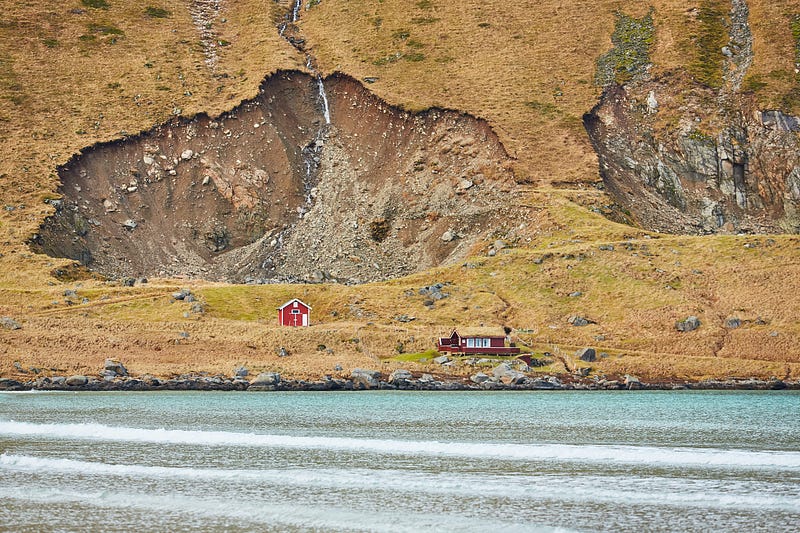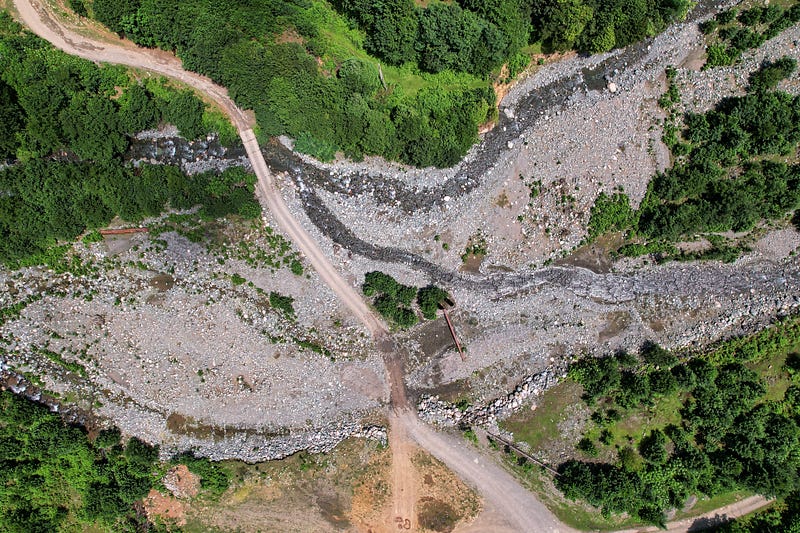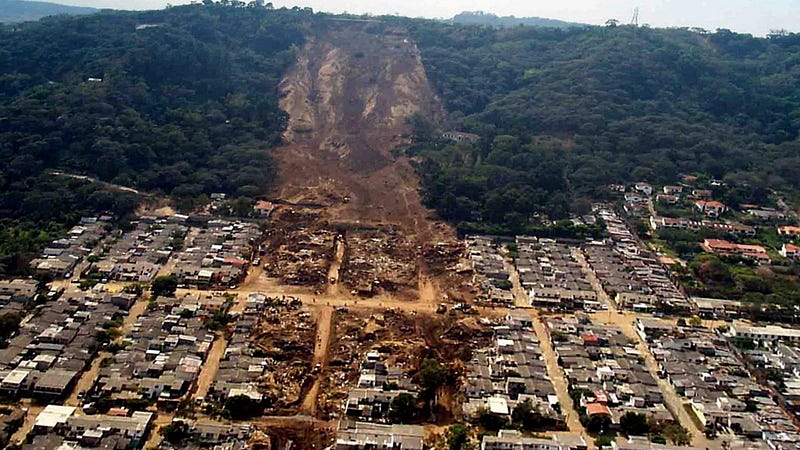# The Hidden Dangers of Landslides: Understanding Their Impact
Written on
Chapter 1: Introduction to Landslides
When the Earth shifts, the repercussions can be catastrophic. Landslides, intricate and often unpredictable geological events, threaten both communities and their surrounding environments. These disasters, which can occur in various parts of the globe, lead to loss of life, significant property damage, and lasting alterations to natural landscapes. A comprehensive understanding of landslides, including their causes, mechanisms, and preventive measures, is vital for safeguarding communities.
What Exactly Is a Landslide?
Approximately 10% of the Earth's land surface is susceptible to landslides. A landslide is a geological event where a mass of soil, rock, and debris breaks away and travels down a slope. This movement occurs when the forces maintaining the materials on the slope are surpassed, prompting a downward shift. Landslides can vary widely in scale, from minor slides to massive events involving substantial volumes of material. They may be triggered by numerous factors, including intense rainfall, rapid snowmelt, earthquakes, and soil erosion caused by natural forces like rivers or wind. Mountainous and coastal regions are particularly at risk due to their geological characteristics.

Factors Contributing to Landslides
Landslides are complex occurrences, often instigated by a mix of geological, climatic, and human-related factors.
- Geological Aspects: The type of soil and rock significantly influences slope stability. Certain soils, like expansive clays or loose materials, are more susceptible to sliding. Geological faults and weak zones can also facilitate movement.
- Slope and Gradient: Areas with steep slopes are at a heightened risk for landslides due to increased gravitational forces.
- Precipitation: Heavy rain, particularly during intense or prolonged periods, can saturate soil, diminish its stability, and elevate pore pressure, leading to landslides.
- Seismic Activity: Earthquakes can destabilize slopes by disrupting force balances, causing soil and rock to shift along existing faults.
- Human Activities: Deforestation and urban development can significantly affect slope stability, as tree roots are critical for soil anchoring.

Consequences of Landslides
In 1970, a catastrophic landslide in Yungay, Peru, buried the town in mud, resulting in over 20,000 fatalities. The consequences of landslides are severe, impacting both human lives and the environment.
- Loss of Life: Landslides can be particularly deadly in densely populated areas situated on unstable slopes, where rapidly moving debris can engulf buildings and infrastructure.
- Property Damage: These events can destroy homes, roads, bridges, power lines, and other critical infrastructure, resulting in significant economic losses.
- Population Displacement: Residents in landslide-prone regions may have to evacuate their homes due to safety concerns.
- Alteration of Landscapes: Landslides can dramatically modify landscapes, leaving scars on slopes and changing the flow of waterways, which can have long-term ecological effects.
- Environmental Hazards: They can also lead to the release of hazardous materials, contaminating soil and water and posing threats to local ecosystems.
Understanding these consequences is crucial for effective mitigation, early warning systems, and emergency response strategies.

Prevention and Management of Landslides
Landslides can occur worldwide, regardless of climate. Implementing effective prevention and management strategies is essential to minimize risks and mitigate the consequences of these natural events.
- Risk Assessment: Thorough evaluations of landslide risks in susceptible regions are critical. This includes identifying geological, topographic, and climatic factors that contribute to landslides, along with assessing the vulnerability of communities and infrastructure.
- Land Use Planning: Proper planning is essential to prevent new developments in high-risk landslide zones.
- Monitoring and Early Warning: Regular surveillance of landslide-prone areas is necessary to detect early warning signs such as ground movement or soil cracks.
- Preventive Measures: Avoiding activities that increase landslide risk, like excessive deforestation and poor agricultural practices, can enhance stability. Implementing soil conservation and ecosystem restoration strategies is vital.
- Engineering Solutions: In vulnerable areas, engineering interventions, such as retaining walls and drainage systems, can be employed to bolster slope stability.
By adopting these preventive and management strategies, the risks associated with landslides can be significantly reduced, safeguarding lives and environments.

Final Thoughts
Landslides represent a serious natural hazard with far-reaching consequences for people, infrastructure, and ecosystems. Their prevention and management require a proactive approach that encompasses risk assessment, strategic land use, monitoring, and engineering solutions. By collaborating and implementing these strategies, we can mitigate landslide risks, protect communities, and save lives.
Thank you for engaging with this exploration of landslides! Stay tuned for more informative content.
The first video titled "Why don't we feel the Earth spinning?" delves into the intriguing reasons behind our perception of gravity and motion, providing insights into Earth's rotation and our everyday experiences.
The second video, "Earth's inner core may have temporarily stopped turning, could reverse," discusses the recent research surrounding Earth's inner core dynamics and its potential implications for our planet's geology.